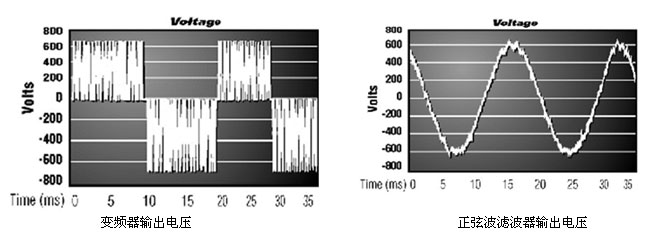As a three-phase asynchronous motor speed control program, in addition to excellent speed control performance, the inverter can effectively reduce energy consumption and increase productivity and product quality, and has become an indispensable device in modern industrial production. However, the inverter brings with it a variety of conveniences and also produces a lot of problems. The most obvious of these is the heating of the motor and even the burning of the motor in severe cases.
This is because the inverter drive motor voltage is not a sinusoidal voltage, but a pulse width modulation (PWM) voltage, as shown in Figure 1.

After this voltage is applied to the motor, the current generated in the motor is not a smooth sine wave current but a current with a carrier frequency component. Different frequency converters have different carrier frequencies, typically 1 to 12 kHz. For a PWM voltage with a carrier frequency of 1 kHz, the current flowing into the motor is mainly a current of 1 kHz, 2 kHz, 3 kHz, 4 kHz, 5 kHz, and the like. These high-frequency currents increase motor winding losses and core losses. Theoretical analysis shows that the loss of the winding is proportional to the square root of the frequency, and the loss of the core is proportional to the square of the frequency. Therefore, when such a high-frequency current flows through the motor, the loss of the iron core increases sharply, causing the motor to overheat. In particular, iron cores used in electric motors are silicon steel sheets with high-frequency loss, and under high-frequency currents, heating is more serious.
The solution to motor overheating is to reduce the high frequency components in the motor drive voltage. The way to achieve this is to install a SWF sine wave filter at the output of the frequency converter. The function of the sine wave filter is to transform the PWM voltage waveform into a sine wave voltage waveform suitable for the motor, as shown in FIG. 2 , thereby eliminating the phenomenon of motor overheating.

Figure 2 Sine wave filter effect
The engineers of the Aerospace July 6th Department reminded everyone to first understand the carrier frequency of the inverter when purchasing the SWF sine wave filter, otherwise it may affect the filtering effect.